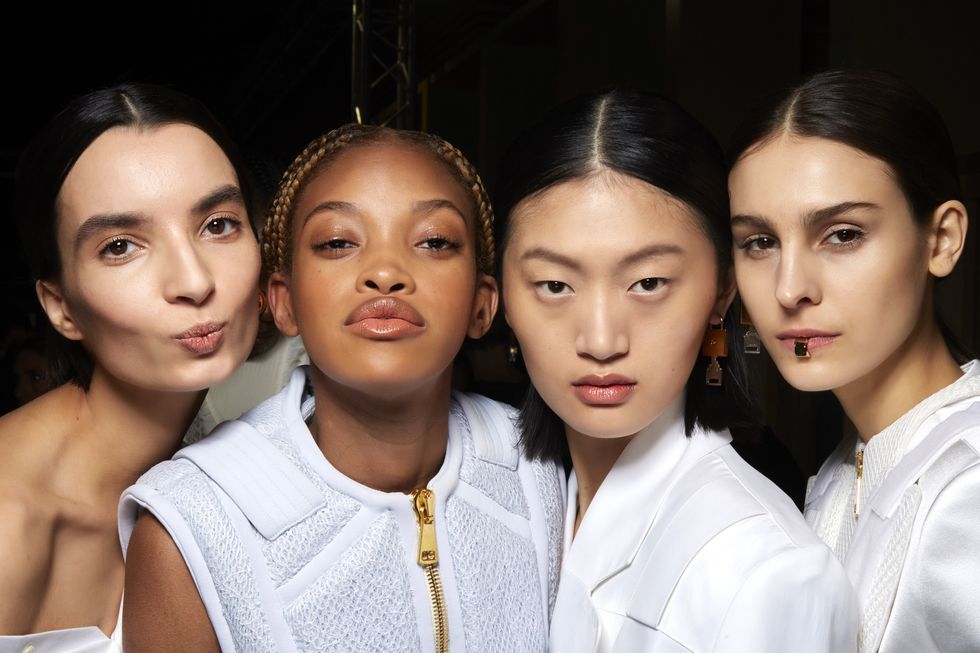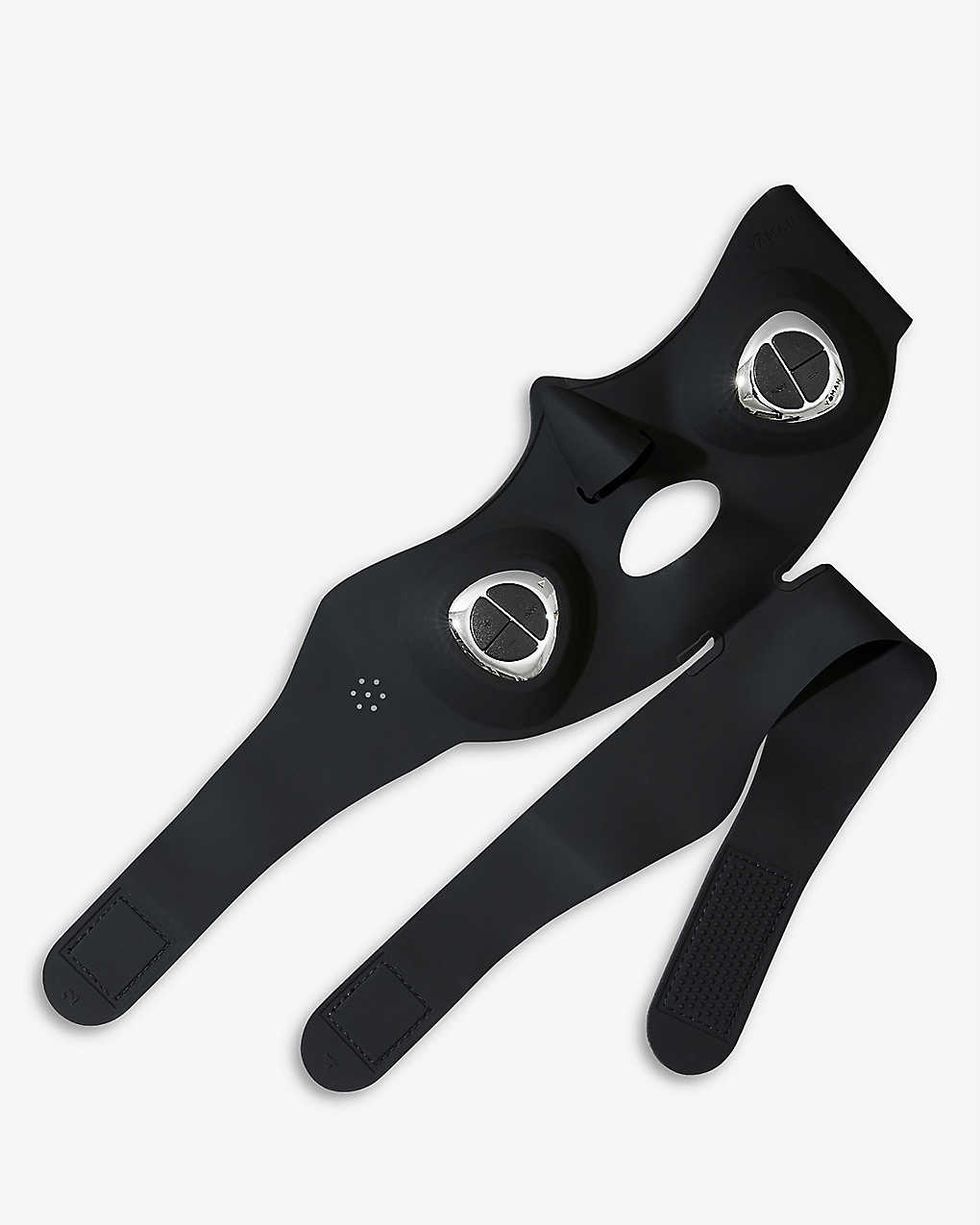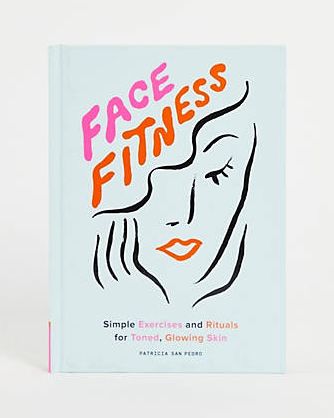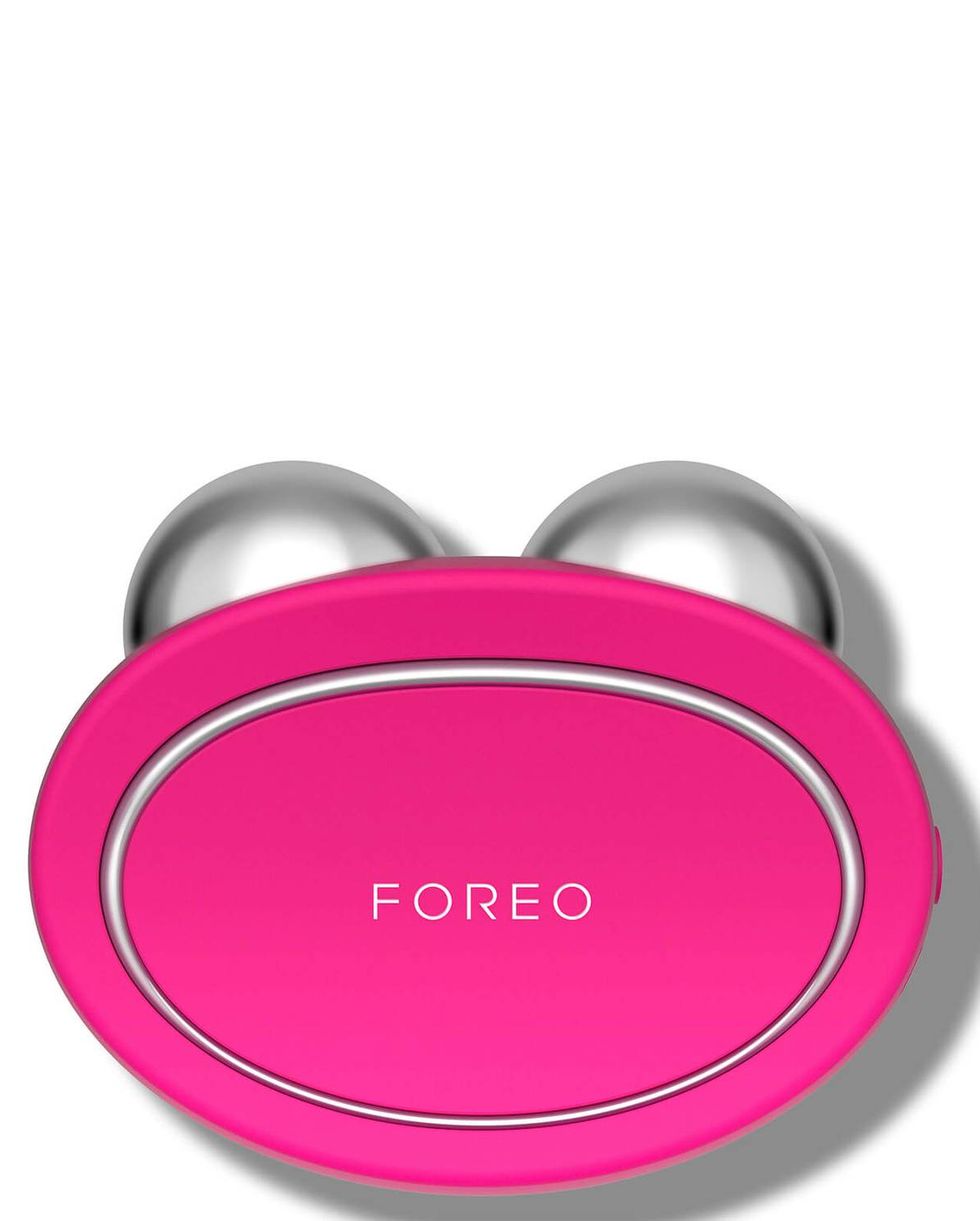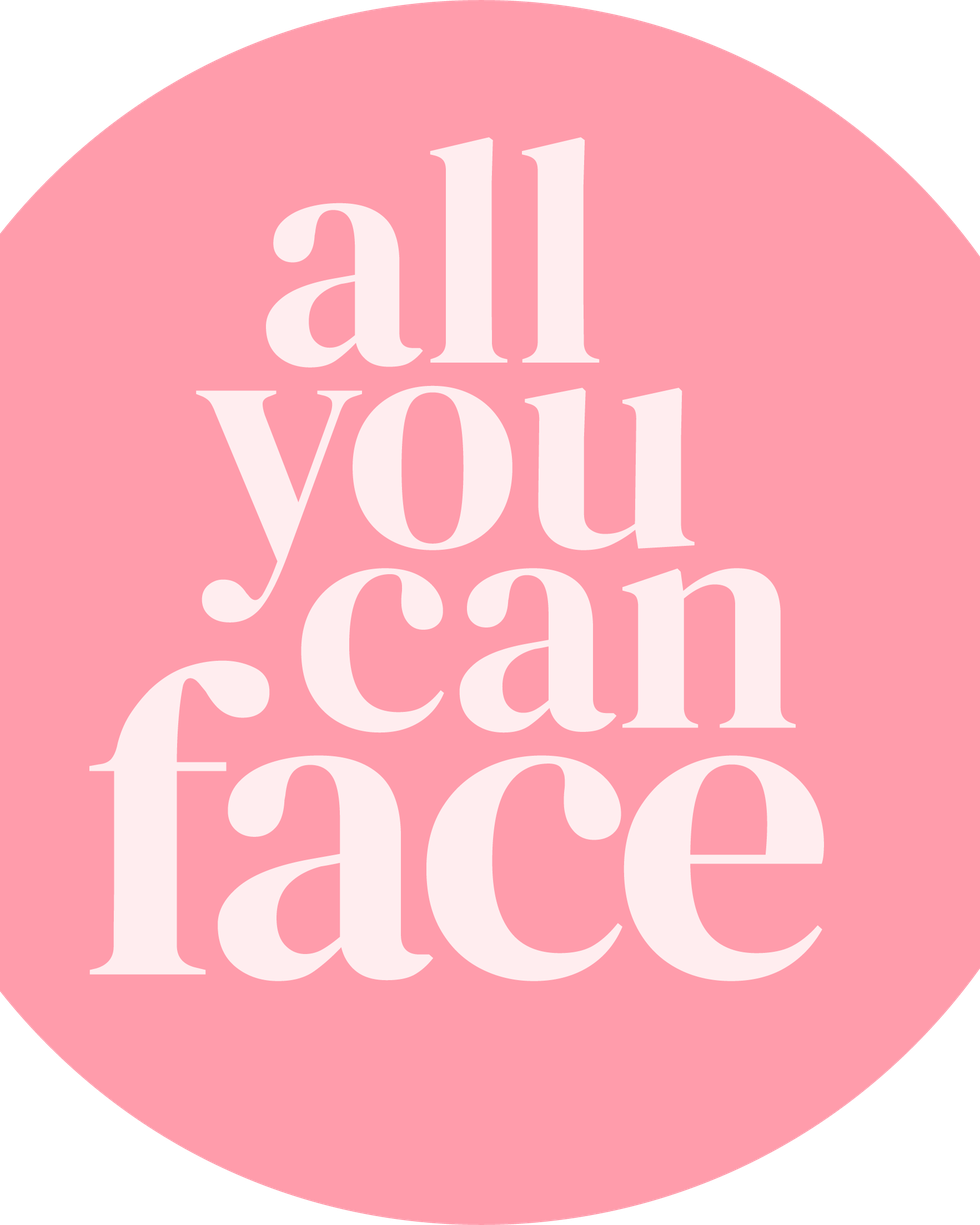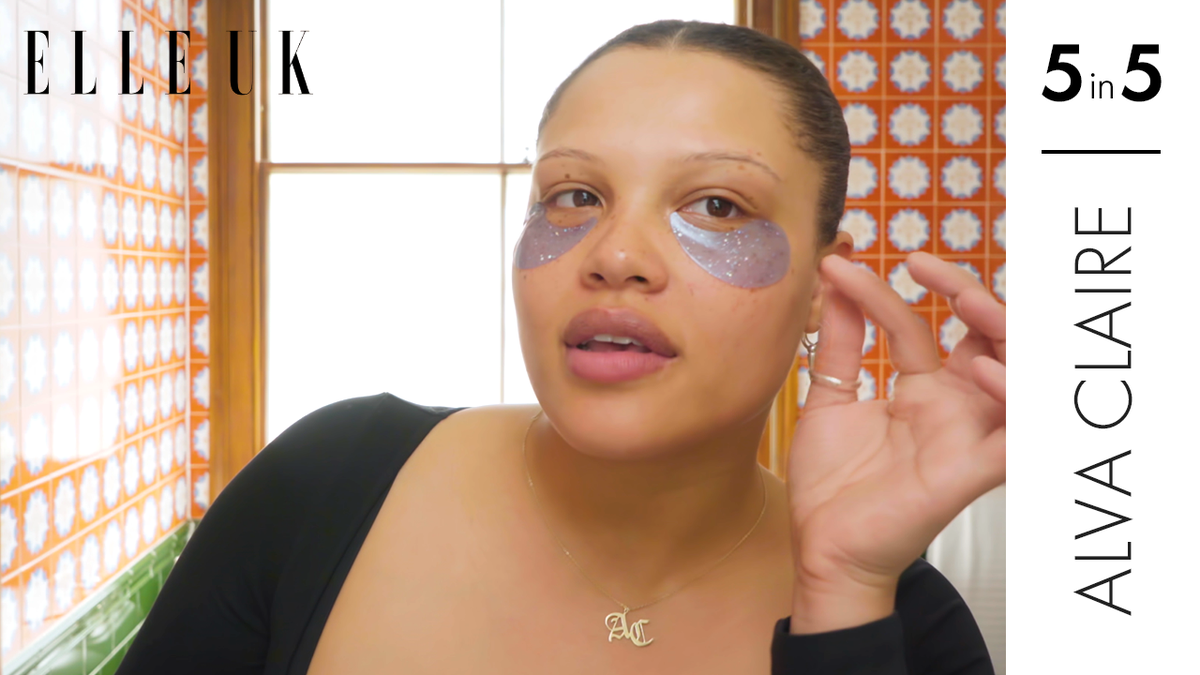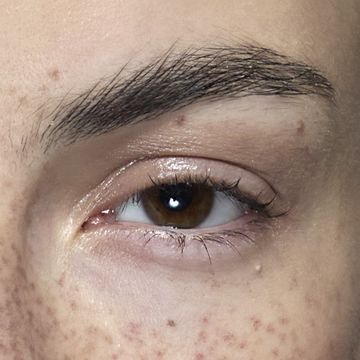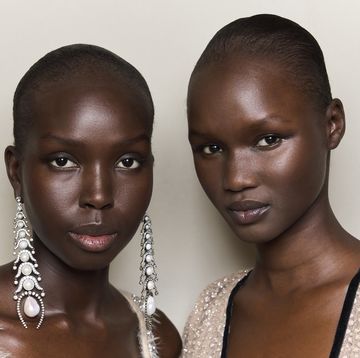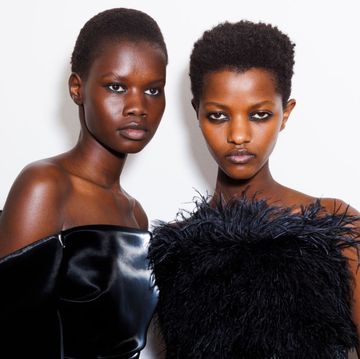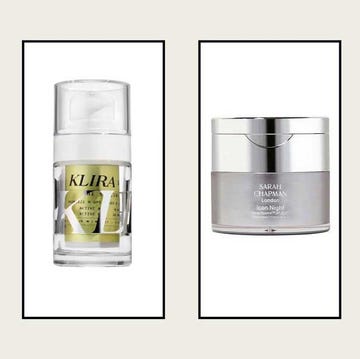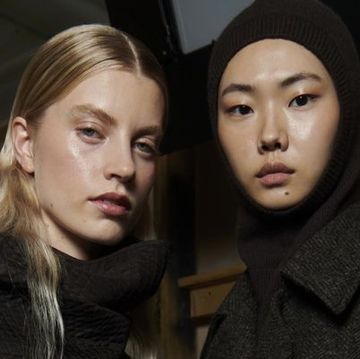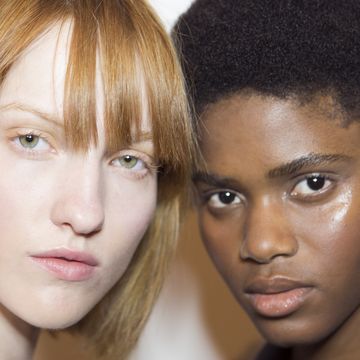Is it your pores, your jawline or your ever-so-slightly wonky nose? Whatever it is that bothers you specifically, we’ve all fallen deep into over-analysing our faces, and understandably so. Just when the omnipresence of social media left us sure that we couldn’t be any more exposed to our own image, along came a pandemic which hurried us further into the house of mirrors.
The more we Zoomed, Facetimed and Instagrammed in an attempt to keep ourselves connected with the outside world, the more we picked, poked and prodded at our own reflections. According to my work calendar, I spent over 150 hours on video calls in the last three months of 2021 alone; no wonder I'm now hyper-aware of my own facial asymmetries - from my dominant raised eyebrow to the way one side of my mouth slightly pulls down when I talk.
Ironically, the same screens that had us reckoning with our faces day in day out also provided us with a connection to a new skincare movement that was beginning to emerge. Almost overnight, leagues of fresh-faced ‘skinfluencers’ appeared, not just cleansing and masking, but expertly scraping, rolling and pulling their faces in front of the camera. But they hadn’t mixed up the recipe for a sourdough starter and an at-home face mask: they were extolling the benefits of facial fitness.
The details of face training will differ depending on who you speak to, but comparisons are frequently drawn to the way we exercise our bodies. 'According to data from Pinterest, searches for "Face yoga exercises" and "How to get naturally glowing skin" quadrupled during 2020,' says Olivia Houghton, senior creative foresight analyst at trend forecaster The Future Laboratory.
On social media platforms, where bite-sized video reels and infographics answered our pandemic-born desire for filling time and adopting easy-to-master hobbies, the face fitness trend largely grew around the use of facial massage and tools. The centuries-old East Asian gua sha quickly became one of the most popular techniques, with the Tiktok hashtag reaching 840.1M views (and counting).
But can face training really live up to the promises made by its glowing and sculpted fans? As a beauty journalist, I’ve become immune to the clickbait nature of quick fix promises and social media trends. And, to be honest, lazily accepting of the idea that if you want to see profound change in your face it's probably going to come at the tip of a needle. Facial fitness, however, wasn’t only taking off at a rate I’d never seen before, but was also a movement accessible to people of all skin types and ages.
Intrigued, I picked up a gua sha tool and started using it for 5-10 minutes a day- and I noticed an immediate change in my reflection. My skin looked healthier and more alive than it had in months, and I was suddenly aware of just how much tension I was carrying in my face. Both suspicious and in awe of them, I started to speak to experts in these techniques to find out what, if anything, was happening below the surface.
Facial massage, a long-standing technique for releasing tension is something that Abigail James, expert facialist and author of The Glow Plan, has been practising with her clients for over 15 years. After training in sports and Ayurveda lymphatic massage, she realised the applications were transferable to our faces. ‘In our face, not all of the muscles are connected bone to bone, some of them are actually attached to each other so that we can express. We still get tension in those muscles – you can look at someone's face and immediately see if they're stressed, happy or upset,’ she explains.
‘Where you've got tight muscles, you're going to have fluid that won't be able to pass through as easily because there's tension. With massage, you can work along stretching out those muscles to release that tension.’ In both the facials she performs in her clinic and the techniques she shares with followers on Instagram and Youtube, James favours the physical and emotional benefits of touch rather than that of tools.
The point of these techniques is to get beneath the surface, working with the muscles in a way that ultimately benefits the skin. ‘Facial massage is about helping to boost blood circulation, and as we do that we bring fresh blood and nutrients up to the skin surface,’ says world-leading face yoga expert Danielle Collins, whose multifaceted approach combines the benefits of stretching muscles and massage. ‘It also works on lymphatic drainage, helping to remove the toxins from our skin and ease any tension.’ The results? A radiant, plump, and sculpted complexion.
Facialist and Chinese medicine practitioner Ada Ooi - the hands responsible for many a red carpet glow - has clients from around the world returning for her signature blend of gua sha, traditional Chinese acupuncture and reflexology. Her all-encompassing facials are designed to stimulate the body's meridian lines, an aspect of traditional Chinese medicine which conceives of channels of interconnected pathways that transport energy across the body. While on a surface level, Ooi’s facials leave clients with radiance and defined features, there’s an element of training for the muscles too. ‘The long term benefits of gua sha and massage is that the more you do it, the more you signal to the area that you’re massaging and train it on how it should behave,’ she says.
As FaceGym founder Inge Theron explains, where facial massage focuses on muscle manipulation, face exercise (also known as face yoga) is ‘resistance training’. ‘When you're actually pulling and pushing your muscles, you get an exhaustion, and the muscle is strengthening because it's working out,' she says. 'Where the muscle is the scaffolding that your skin sits on, if your muscles are toned and tight, the skin is toned and tight.’
Theron was so convinced by the benefits of exercising the face, she built a business around it. After working in the spa industry and as a specialist journalist on the subject, she identified a gap in our approach to facial rejuvenation. ‘Everything was either invasive or skin led, no one was talking about muscles. My whole idea was if we're taking our bodies to the gym, surely we should take our faces to the gym and exercise them too,' she says. 'When I first came up with this idea, and said we’re going to be able to tone, tighten and lift with non-invasive techniques, people said it was never going to work.’
But after the pandemic rendered her previous business model redundant almost overnight, Theron and her team identified the exercises that would be teachable (they had 180 to choose from), accessible and produce high impact results, and shared them virtually with FaceGym’s followers. ‘We went from 50,000 followers on Instagram to almost 770,000. Once you started seeing real people around the world achieving professional studio results at home, I think that's what really catapulted the brand.'
While much of the evidence for facial exercise remains anecdotal, there are studies that suggest it has legitimate applications. One 2018 study carried out by Northwestern University found that 20 weeks of facial exercises practised by middle-aged women improved the overall appearance and texture of their skin. Another study from South Korea, which looked at the results of using a facial exercise device twice a day for eight weeks, found that facial muscle thickness increased, resulting in the skin appearing more rejuvenated and with participants reporting that wrinkles seemed less obvious.
‘Face yoga isn't going to suddenly sort out all the sun damage or laxity from loss of collagen that comes with age,’ says dermatologist Dr Justine Hextall. ‘But it may well help to lift the face, and the results from studies seemed to show it that way. We know repetitive exercise in our face does change muscles. People grind their teeth and they get these hypertrophic [enlarged] muscles around the jaw area.’
So does facial fitness sound the death knell for Botox and fillers? Looking at the spike in aesthetic treatments over the last year, it’s unlikely. It does, however, open up another option. Where invasive, injectable procedures have become almost an immediate first response to signs of skin ageing, the natural alternative of facial exercise answers a growing change in attitudes. ‘I think it really cuts 50-50,’ says Theron. ‘I would say 50% of our community, certainly our younger clients, have decided that they want to delay using invasive procedures.'
While the taut, sculpted results of facial training are what motivates people to start, the holistic element of this practice forces us to reconcile and reconnect with the faces we've become so detached from. Personally, I wasn’t sure whether it was the physical improvement of face fitness on my appearance or the time spent getting to know my face that made me view myself in a more sympathetic way, but it was the first time that my self-perception had positively changed in a long time. In a world where self improvement is served up on a platter of creams, injectables and cosmetic treatments, facial fitness embraces what we already have. And in light of the past two years, isn't that an approach we should all be striving for?



